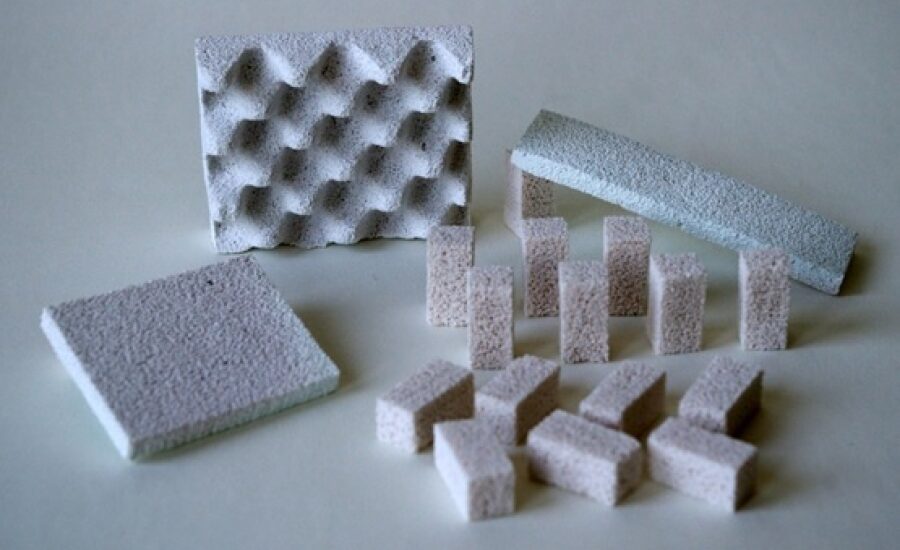The bioceramics and hydroxyapatite industry is expected to exhibit a robust 6.9% CAGR during the forecasted period (2022-2028), with a positive long-term outlook. Aluminium oxide, which accounts for more than 45% of the global market, is anticipated to maintain its dominance. Hydroxyapatite, noted for its mechanical strength and biocompatibility, is expected to continue to be a popular material for orthopedic implants. Dental implants, particularly those created with zirconia-based bioceramics, are likely to retain a significant market share in the bioceramics and hydroxyapatite sectors.
Hydroxyapatite is of interest to healthcare companies because it interacts with live tissues in the body to provide efficient bone growth solutions. The increasing use of hydroxyapatite in the healthcare sector has enhanced the potential for growth in the global bioceramics and hydroxyapatite market. In 2017, the market for hydroxyapatite and bioceramics grew 5.7% year on year. By the end of 2022, the global market for bioceramics and hydroxyapatite is expected to reach US$ 3 billion. North America and Europe are estimated to account for about 60% of the global market for bioceramics and hydroxyapatite by the end of 2018, with demand for these materials expected to grow moderately due to their use in dental and orthopaedic implants, among other applications.
Access Your Sample Report for Valuable Insights!
https://www.futuremarketinsights.com/reports/sample/rep-gb-7049
Bioceramics, also known as medical ceramics, play an important role in the production of dental and orthopedic implants. Materials used in bioceramics are typically oxides, carbides, or nitrides. Bioceramics are still popular, and they can be classed as biologically active, inert, or resorbable depending on the material type. Among the most extensively used bioceramics in a variety of industries are aluminum oxide, zirconia, calcium phosphate (tricalcium phosphate, hydroxyapatite), and bioglass. Hydroxyapatite is a naturally physiologically active calcium phosphate bioceramic. Natural human bone is 70% hydroxyapatite. As a result, it has excellent biocompatibility. Hydroxyapatite also promotes bone health and development. However, the low mechanical strength of hydroxyapatite has limited its application.
Over the projection period, the growing requirement for effective dental implants, hip, joint, and knee replacement devices is expected to drive demand for bioceramics and hydroxyapatite. Over the last decade, per capita implant production has translated into exponential market growth.
There has been an increase in the percentage of the elderly population, who are more vulnerable to ailments such as osteoarthritis, knee, joint, and hip issues, teeth decay, and so on. Over the forecast period, the demand for bioceramics and hydroxyapatite is expected to be driven by an aging population, as well as other factors such as an increase in the frequency of accidents and poor eating habits, which lead to tooth decay, among others.
Bioceramics and hydroxyapatite are increasingly being used for orthopedic and dental implants due to their improved biocompatibility, high mechanical strength, and chemical and thermal stability. Growing health concerns about the impact of the materials used to make dental implants have prompted manufacturers to focus their investments on titanium as an important component. However, if titanium implants are not properly maintained, they can corrode. Manufacturers are creating zirconia-based implants made of white ceramic material to improve patient care. These implants provide increased biocompatibility, which is projected to increase demand for bioceramics and hydroxyapatite in the healthcare business.
In contrast to the factors driving market expansion, the availability of bioceramics and hydroxyapatite at premium pricing, as well as a lack of consumer awareness, are projected to stifle growth in the worldwide bioceramics and hydroxyapatite market in the future years. Furthermore, due to a lack of technological breakthroughs in developing nations in the Asia Pacific region, metal-based implants remain prevalent, which may impede the growth of the bioceramics and hydroxyapatite markets in the long run.
Ask Us Your Questions About This Report:
https://www.futuremarketinsights.com/ask-question/rep-gb-7049
Segmentation Analysis
- On the basis of material type, the aluminium oxide segment is projected to retain its dominance in the global bioceramics and hydroxyapatite market throughout the forecast period, accounting for a value share of ~45% by the end 2018.
- On the basis of type, bio-inert is expected to remain a leading segment in the global bioceramics and hydroxyapatite market, recording a CAGR of 6.8% over the forecast period. However, the bio-active segment is expected to witness higher growth rate in terms of value.
- On the basis of application, sales of the bioceramics and hydroxyapatite is likely to remain concentrated for the development of the orthopaedic implants. However, other applications such as dental implants and implantable electronic devices are projected to witness significant growth over the coming years in terms of consumption.
Vendor Insights
The report highlights some of the top companies operating in the global bioceramics and hydroxyapatite market, which include Morgan Technical Ceramics, CeramTec, Berkeley Advanced Biomaterials, Inc., Kyocera Corporation, Cam Bio Ceramics BV, FLUIDINOVA, Premier Biomaterials, Plasma Biotal Ltd., SofSera, Bonesupport AB, Nano Interface Technology, and Sigma Graft amongst others.
Key Segmentation
By Material Type
- Aluminium Oxide
- Zirconia
- Calcium Phosphate
By Type
- Bio-Inert
- Bio-Active
- Bio-Resorbable
By Application
- Dental Implants
- Orthopaedic Implants
By Region
- North America
- Latin America
- Eastern Europe
- Western Europe
- SEA and Pacific
- China
- India
- Japan
- MEA
About Future Market Insights (FMI)
Future Market Insights, Inc. (ESOMAR certified, recipient of the Stevie Award, and a member of the Greater New York Chamber of Commerce) offers profound insights into the driving factors that are boosting demand in the market. FMI stands as the leading global provider of market intelligence, advisory services, consulting, and events for the Packaging, Food and Beverage, Consumer Technology, Healthcare, Industrial, and Chemicals markets. With a vast team of over 5000 analysts worldwide, FMI provides global, regional, and local expertise on diverse domains and industry trends across more than 110 countries.
Contact Us:
Future Market Insights Inc.
Christiana Corporate, 200 Continental Drive,
Suite 401, Newark, Delaware – 19713, USA
T: +1-845-579-5705
For Sales Enquiries: sales@futuremarketinsights.com
Website: https://www.futuremarketinsights.com
LinkedIn| Twitter| Blogs | YouTube

